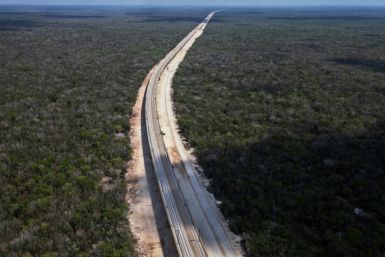Rio Tinto has the remaining quarter to reach its 340 million tonnes target
Rio Tinto has released its third quarter operations review, which projects strong production results but notes that there is still a long way to go for the company before it reaches its year-end target. Chief executive Sam Walsh said the consistency of delivering efficient production, rigorous cost control and sound allocation of capital would be crucial.
In a report released on Friday, Walsh noted that the company's current approach is “ensuring that our tier one assets generate substantial free cash flow even during a challenging economic environment”.
Strong production results have also resulted from expanding Pilbara infrastructure and having the Ore Product Group successfully commission the testing system -- a move, Walsh said, increased iron ore shipments to customers.
“Our cash generated from operations will enable us to deliver strong returns to shareholders through the cycle and our balance sheet will be further strengthened by recent divestment activity,” he added.
Five important points were discussed in the report that highlighted the company’s third quarter growth.
Firstly, the completion of Pilbara infrastructure expansion, combined with the ramp-up of iron ore mined capacity, continues to generate maximum value from the integrated system.
Secondly, as compared to last year, global iron ore production increased through productivity gains and the ramp-up of operations as shipments are on track to meet full year guidance. The report also noted that the third quarter production of iron ore was 12 percent higher than the same quarter in 2014, and eight percent above the second quarter of 2015.
Third party shipments are also reaching close to 20 million tonnes, following the record production of Weipa, to sustain a strong performance in bauxite.
Copper was mined to meet full year guidance as Oyu Tolgoi benefits from higher grades and Kennecott continues to focus on the east wall de-weighing and de-watering.
Lastly, the company agreed to the sale of its interest in the Bengalla thermal coal Joint Venture for AU$606 million on Sep. 30.
Production of aluminum are as follows:
Bauxite
The strong performance of bauxite was sustained in the third quarter as Weipa’s nine-month production gave rise to a nine-month record for the group.
The production was four percent higher than in 2014. This enabled the group to ship close to 20 million tonnes to third parties in the first nine months of 2015. This reflected a 19 percent improvement from the same months in 2014.
Alumina
The first nine months of 2015 had alumina production up by five percent as compared with the same period in 2014. This excludes production from the Gove refinery curtailed in May of 2014. Exclusion reflected the improved productivity at Queensland Alumina and Yarwun.
Aluminium
Production of aluminium in the third quarter was higher than in 2014. Record quarterly production at eight of the smelters more than offset lower production from Kitimat as it commissioned the modernised smelter. Kitimat has increased to nameplate capacity of 420 thousand tonnes, or 48 percent increase in the previous nameplate capacity. It is expected to be achieved in early 2016.
The expected 2015 global shipments of the company at around 340 million tonnes (100 percent basis) from its operations in Australia and Canada are unchanged.
Contact the writer at feedback@ibtimes.com.au, or let us know what you think below.






